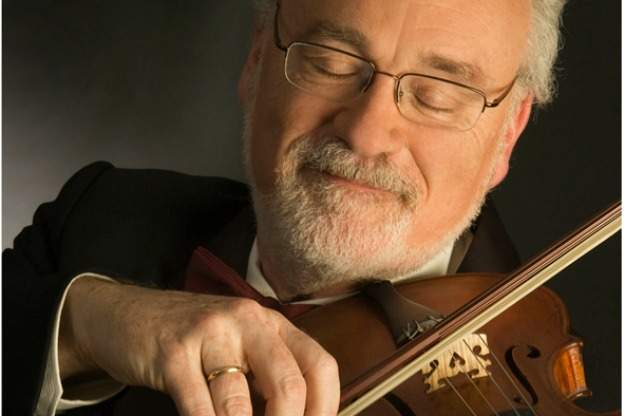
Well-Known Masterpieces
Over the next few weeks, we'll sample compositions that Bach wrote for the violin from three recent recordings. Today we're "going solo" with a 2013 Centaur Records release of Bach's Sonatas and Partitas for the violin alone, performed by Daniel Stepner. Â
(Next week, we'll hear the violin as a chamber music partner with the harpsichord in performances by Ton Koopman and Catherine Manson. And then, we'll tie things up with a release from the Freiburg Baroque Orchestra and Bach's concertos for one, two, and three violins.)
It's not that none of this repertory has been recorded before-quite the contrary, this is some of Bach's most familiar and most recorded music. With so many CDs already on the market, you might wonder, "Why on earth do we need others?" Well, Bach's manuscripts haven't changed since he wrote them, but our interpretations of them have. Music is both living and personal: each new performer in their own place and time brings something of themselves to these Bach masterpieces. And that triangle of composer-performer-listener gives wonderful opportunity to hear the different treatments of this music through various recordings.
Going Solo
Daniel Stepner certainly has a lot to offer-and from this recording of the Six Sonatas and Partitas for solo violin, it's obvious that Stepner has been immersed in Bach's music for most of his performing career.
Many Variables
The tracks on this two-disc set were laid down over a span of 23 years, between 1989 and 2012. They were recorded at four different locations, on three different violins, using two different recording formats (reel-to-reel and digital) by one performer.
There's a lot to take in, and a lot to distinguish. It's hard to know if you like a particular track because you prefer the sound of the 1641 Italian Amati violin to the 1740's German Klotz or the 1693 Stradivari, all instruments that Stepner plays. Maybe its the acoustics that catch your ear: do you find the resonance of the Slosberg Auditorium more to your liking, or the sound of the studio space, or museum gallery? Or are you an audiophile who prefers the sound of analog over digital-both formats were used in this set.
And what about the way each piece was differently miked and engineered and produced by yet another varying group of people. Then there's also the question of Mr. Stepner himself: how has his playing changed and developed over the more than two decades during which these recordings were made?
There are so many levels to unpack, and in a case like this, it's easy to miss the forest for the trees! At the end of the day, the main point is J.S. Bach through the eyes of Daniel Stepner. Taken as a whole, all of these variables add up to living music documented as one tiny snapshot in time.
Chromatic Fantasy
Stepner has made his own arrangement of Bach's Chromatic Fantasy and Fugue, usually performed on keyboard. Described by Stepner as a "kaleidoscope of harmonies" full of "daring modulation," the task of setting Bach's Chromatic Fantasy for solo violin was quite an adventure! Stepner is the first to admit that there is no evidence that Bach ever intended the fantasy to be played on a violin, but it was a challenge that he nonetheless found irresistible.









